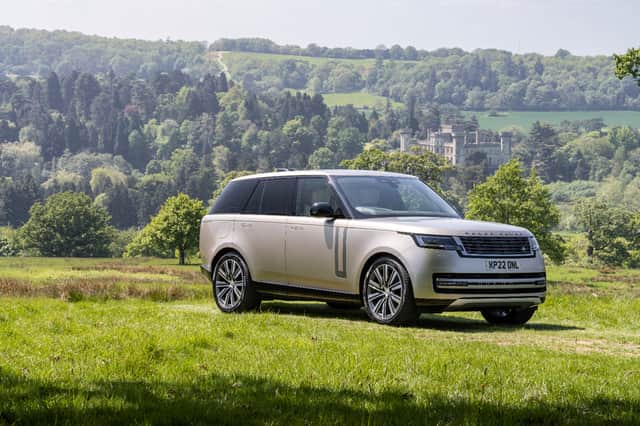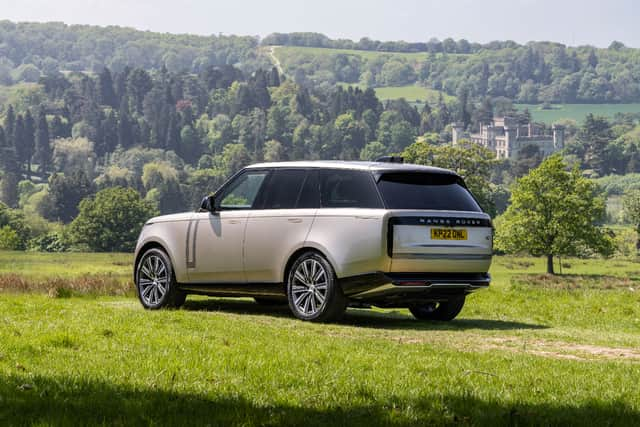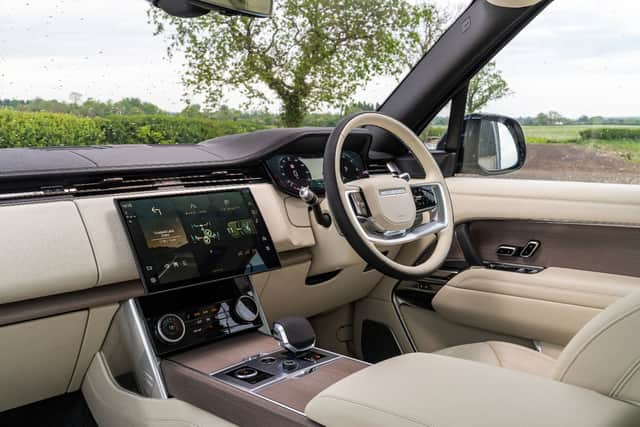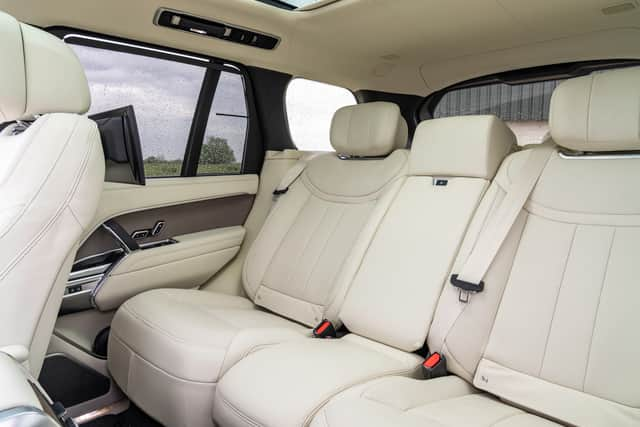2022 Range Rover review: Luxury SUV with performance, spec and price to blow away the competition


It’s not every day that a new Range Rover comes along. In fact, in the car’s 52-year history there have only been four previous generations, so 2022’s fifth-gen really is a big deal.
Since the Mk1’s launch in 1970, the Range Rover has evolved from a “posh Land Rover” with a hose-down interior to one of the world’s most recognised luxury cars. Everyone from royalty to rappers has been sucked in by its blend of on-road presence, off-road ability and sumptuous high-spec interiors.
Advertisement
Hide AdAdvertisement
Hide AdSo, this latest model is all about preserving that image and reputation while bringing the Range Rover fully into the 21st century with more modern looks, technology and powertrains.
Externally, that modernisation is all about reducing visual noise. So while the overall shape is instantly identifiable thanks to its upright profile, “floating” roof and upturned boat tail, the surfaces and lines are smoother and neater with less unnecessary embellishments.


The vents on the front wings are now better integrated with the body and the door handles are pop-out affairs to give a cleaner look on the road. All around the car the glazing is flush fitted, creating a flat and near seamless finish to the doors, and panel gaps have been halved k. At the front a new deeper and wider grille design sits beneath the clamshell bonnet and emphasises the car’s width. But it’s at the rear where the clearest difference comes in the shape of new slimline vertical LED tail lights that flank the traditional split tailgate and blend with the full-width bar that houses other “hidden-till-lit” function lights.
Like the exterior, the interior feels simpler and fresher than before. Even small touches such as moving the window and mirror switches down from the door top help give it a less cluttered feel. Two massive screens handle the information sharing but thanks to some neat design don’t feel domineering. The crisp 13.7-inch digital instrument display is a thin panel that appears to almost hang from the carefully sculpted binnacle while the 13.1-inch Pivi Pro touchscreen floats very slightly above the leather dash panel with a wafer-thin frame that reduces its visual weight.
Advertisement
Hide AdAdvertisement
Hide AdAway from the screens there has been a focus on simplifying. There’s plenty of technology - from air purification to scores of charging points and endless connectivity - but it’s overlaid with a clear, unfussy mixture of high-grade materials, including beautiful open-pore wood with metal inlays and sumptuous leather from the brand-new Bridge of Weir facility in Paisley. If leather isn’t your thing, the new Range Rover also comes with a variety of sustainable fabrics including Ultrafabrics and Kvadrat.
As you’d expect from a car that’s 5m long and 2m wide in standard form, the new Range Rover’s interior is cavernous, with enough room for even the most well-fed plutocrats to stretch out in comfort. However, if that’s not big enough, the long wheelbase version adds an extra 20cm. In such a guise, you can opt for the ultra-luxurious SV trim (on sale later this year) with its optional four-seat configuration, or you can for the first time spec your Range Rover as a seven-seater.


Like every seven-seat SUV, the rearmost two seats are best reserved for the particularly small or flexible, but they’re as well appointed as the other pews, with heating, air vents, charging points and cupholders. To reach them, an elegant motorised process slides and tilts the rows in front and can be controlled via physical buttons in the rear or the main touchscreen.
For the first time, Range Rover comes with power assisted doors - a la Rolls-Royce Cullinan - and the option of a “Tailgate Event Suite” that incorporates proper seats into the split tailgate, along with dedicated lighting and speakers.
Advertisement
Hide AdAdvertisement
Hide AdIn 2024, an all-electric Range Rover will go on sale but until then buyers have a choice of petrol and diesel engines with mild or plug-in hybrid options. In the name of balance we tested it with the sensible D350e diesel mild hybrid and the not-so-sensible P530 with a twin-turbo V8 petrol.
Predictably, the 4.4-litre V8, with its 0-60mph time of 4.4 seconds is the more entertaining of the two, making all the right noises and propelling the 2.5-tonne Rangey along surprisingly quickly. The turbocharged unit replaces the old 5.5-litre supercharged V8 and offers 17% better fuel economy but still don’t expect more than 24mpg.


For frugality, you’ll want one of the other options. The D350e we tested offers up to 37.2mpg and emissions of 198g/km, using mild hybrid technology to help improve its credentials. The six-cylinder isn’t quite as silky as the old car’s V8 but it’s still suitably quiet in most conditions and offers impressive refinement and performance - 0-60mph takes less than six seconds.
Two plug-in hybrids - with either 434bhp or 503bhp and a 32kWh battery - claim to offer the best of all worlds, with rapid performance, emissions as low as 30g/km and an official EV range of 62 miles. Land Rover says that’s likely to equate to an impressive 50 miles of real-world use and the Range Rover is unusual in offering up to 50kW rapid charging.
